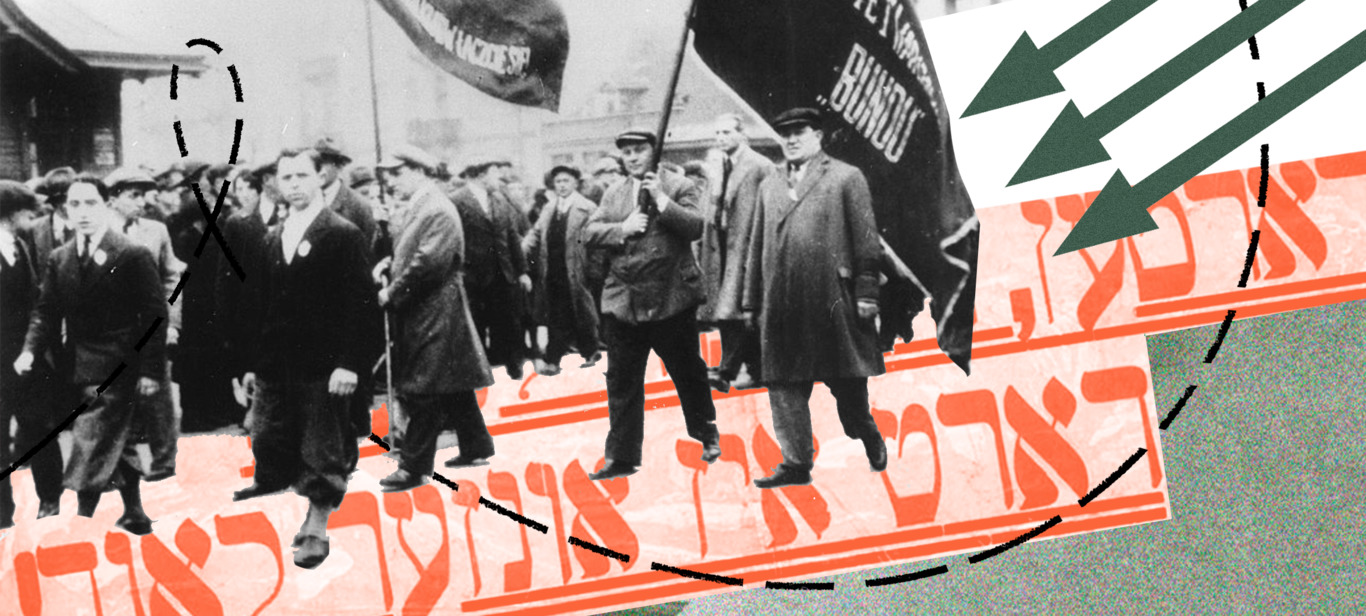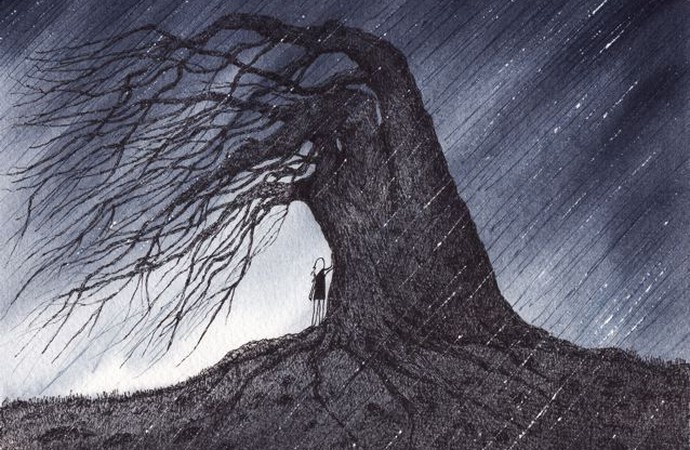The latest round of horrific bloodshed in Israel/Palestine prompts us to recall not only the sad fate of this troubled region, but also Jewish history. Today, everything related to Jewry and its past is “monopolized” by the State of Israel. But this was not always the case. In Eastern Europe, there were alternatives to the Zionist project of “gathering all the Jews in Palestine” that were powerful enough to compete with it. The most influential of these was the Bund, a Jewish national movement that, like many other national movements in Eastern Europe (Ukrainian, Polish, Georgian, and others), had a socialist orientation and did not see national liberation as separate from social liberation.
Brider un shvester fun arbet un noyt
Brothers and sisters of work and need,
All who are scattered like far-flung seed
(…)
To wage the holy war we vow,
Until right triumphs over wrong.
No Midas, master, noble now —
The humble equal to the strong.
These are lines from the song Di Shvue (“The Oath”), written at the very beginning of the twentieth century by the famous writer and ethnographer Shloyme Zanvl Rappoport, known by his pseudonym S. Ansky (he was also the author of the mystical play The Dybbuk, which was praised by the “King of Horror” H.P. Lovecraft himself). This song was once known to almost every Jew from Riga to Odesa. After all, it was the anthem of the Bund, and the Bund was not just another political movement, but a whole philosophy and cultural tradition of Eastern European Jewry. A tradition that offered an alternative to Zionism, stale religious orthodoxy, and assimilation of Jews.
The history of the Bund began in the fall of 1897. The day after the Yom Kippur holiday, thirteen people gathered in a house on the outskirts of Vilnius and vowed to fight together to improve the lot of Jewish workers in the then Russian Empire. It was a time when ruthless modernization and industrialization were destroying the established way of life of the Jews of Eastern Europe, just as they were destroying the traditional way of life of the Ukrainian village. For centuries, Jews had lived in shtetls (towns), engaging in crafts or small-scale trade. But new times have come. A shoemaker with his small workshop could not compete with a shoe factory, and a small shopkeeper could not compete with a large store. Many Jews had to close their small family businesses and go to work at the factory.
The lives of the workers of that time were already full of poverty, oppression, abuse, and injustice. But on top of all that, Jews also experienced national discrimination. A new organization called the Algemeyner Yidisher Arbeter-bund, the General Union of Jewish Workers, or simply the Bund, was called upon to counteract all these evils. Within ten years, it had become one of the largest Jewish organizations in Eastern Europe. In 1906, the Bund comprised 43,000 members, while, for example, the Ukrainian Social Democratic Labour Party had only 6,000 activists at the time.[1]
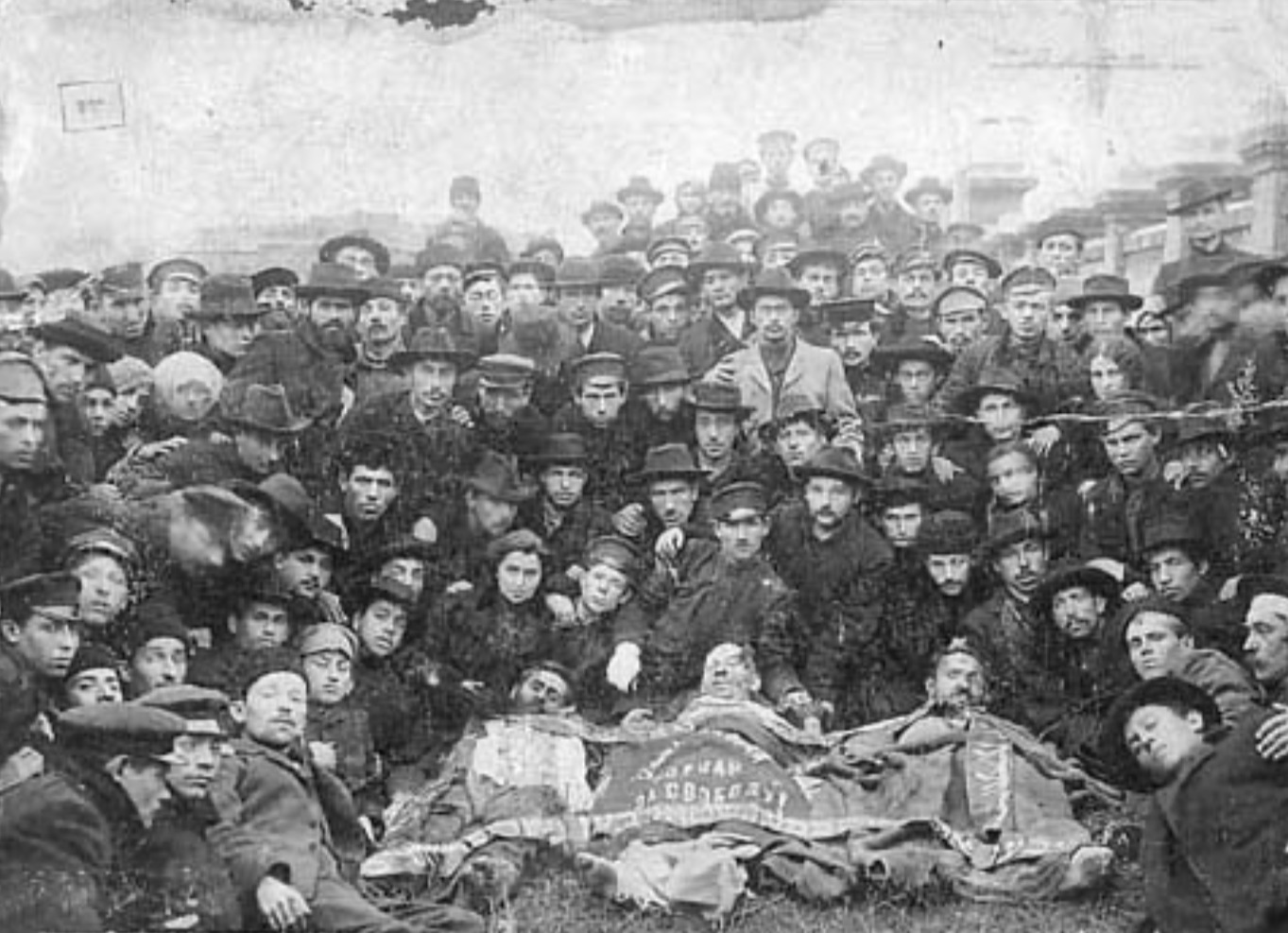
Bund members next to the bodies of their three comrades killed in Odesa during the 1905 Revolution
Doykeyt vs Zionism
The Bund’s program was based on three main principles: socialism, yiddishkeit, and doykeyt. As a labour socialist party, the Bund fought for a democratic republic, women’s equality, social reforms, and an 8-hour workday. But at the same time, it was also a national party that defended Jewish identity, the Yiddish language, and the culture of Eastern European Jewry, and fought discrimination and anti-Semitism. This, in the opinion of the Bundists, was the principle of yiddishkeit, or “Jewishness.” Usually, this word was used when referring to the observance of the Jewish religion in everyday life. The Bundists were perhaps the first to give it a new meaning: for them, it was about Jewish life in its entirety, about the self-identification of communities and people as Jews.
Already at its Fourth Congress in May 1901, the Bund declared: “Every nationality, in addition to the desire for economic, civil, and political freedom and equality, also has national aspirations based on <…> language, customs, way of life, and culture in general, which must be given full freedom to develop.”[2] Thus, to replace the exclusively religious identity of Jewry, the Bundists proposed a secular, national identity. By the way, opposing the dominance of conservative religious leaders in traditional Jewish communities, the Bundists, unlike the assimilationists, defended the preservation of these communities themselves, arguing that they contained “not only the result of the old, but, with well-known reservations, the embryo of the new.”[3]
As a national party, the Bund declared after the bloody Kishinev pogrom of 1903 that violence against Jews should be resisted with the utmost determination.[4] Party members created self-defence units. In 1904, one of these Bund units dispersed gangs of Black Hundreds who were going to destroy Jewish neighborhoods in Daugavpils.
At the same time, the Bund did not have good relations with another Jewish national movement, Zionism. “‘Zionists talk about building a nation state in Palestine. But our party is based on a completely opposite position: our home is here: in Poland, in Russia, in Lithuania, in Ukraine, in America,’ said one of the Bund leaders, Vladimir Medem (a former student of Kyiv University, expelled for participating in a student strike). ‘This is our home, and we are not strangers in it. This is what we base our activities on.’”[5] This was the third principle, doykeyt, or “our country is where we live.” According to the Bundists, Jews had much stronger ties to the country where they had lived for generations than to a distant “historical homeland.” They considered the idea of resettlement in Palestine a utopia, and a dangerous one at that. The Bund claimed that, first, Palestine is too small to accommodate hundreds of thousands of immigrants from around the world, and, second, such resettlement would inevitably cause confrontation with the local Arab population.[6]

Vladimir Medem
Instead, the Bund believed that the ethnically diverse countries of Eastern Europe should be organized in such a way that every nationality, including Jews, could live freely and develop their own national cultures. Neither by dissolving into the surrounding population, as the assimilationists called for, nor by fencing themselves off from it, as the religious orthodox would have wanted. The Bund advocated the creation of a Jewish self-government that would deal with issues of education and culture. Such a self-government would be elected on the basis of universal, free, and equal suffrage by men and women who considered themselves Jews. Jewish schools and universities were to be financed by the state and local governments and be part of the national school network. According to the Bund’s plan, the Jewish community was not supposed to be involved in religious affairs, since religion is “a matter of personal conscience, a private matter in which neither the state nor the proletariat as a class should interfere, providing only freedom of conscience to everyone.”[7]
Importantly, the Bundists saw no contradictions between their socialist and national goals. They believed that the struggle for education in the mother tongue and free cultural development were part of the common struggle of the workers. At the same time, the Bund emphasized that its approach to the national question was not a “panacea for all nations”: it applied only to the specific situation of Jews.[8]
The Bund and “the Prison of Peoples”
As a national labour party in the Russian Empire, the Bund helped Jewish workers form trade unions and organize strikes (including against Jewish employers). In Ukraine, for example, the Bundist influence prevailed in the unions of printers and tailors.[9] Among Jewish workers and young people, Bund members enjoyed such authority that they were sometimes called upon to help when it came to complex legal or even moral issues. Vladimir Medem recalls a funny incident when a pregnant woman turned to the local Bund branch to persuade the child’s father to marry her.
At the same time, as socialists, the Bund members saw themselves as part of the imperial labour movement. In particular, the Bund contributed to the creation of the Russian Social Democratic Labour Party (RSDLP). However, the history of the relationship between Jewish socialists and the RSDLP turned out to be quite complicated. The Bundists defended the autonomy of their own organization and hoped to be recognized as representatives of the Jewish labour movement. Some leaders of the Russian social democrats, including Lenin, labelled such demands as “nationalist,” demanding a complete merger of the two organizations. Because of this, the Bund sometimes left the RSDLP and other times rejoined it.[10]
Instead, the Bund viewed the socialist movements of other oppressed nationalities in the Russian “prison of peoples” as natural allies. For example, in Left-Bank Ukraine, particularly in Poltava province, Bund members willingly cooperated with the Revolutionary Ukrainian Party (RUP).[11] The future diplomat of the Ukrainian People’s Republic, Maksym Hekhter, was both an activist of the Bund and the RUP.
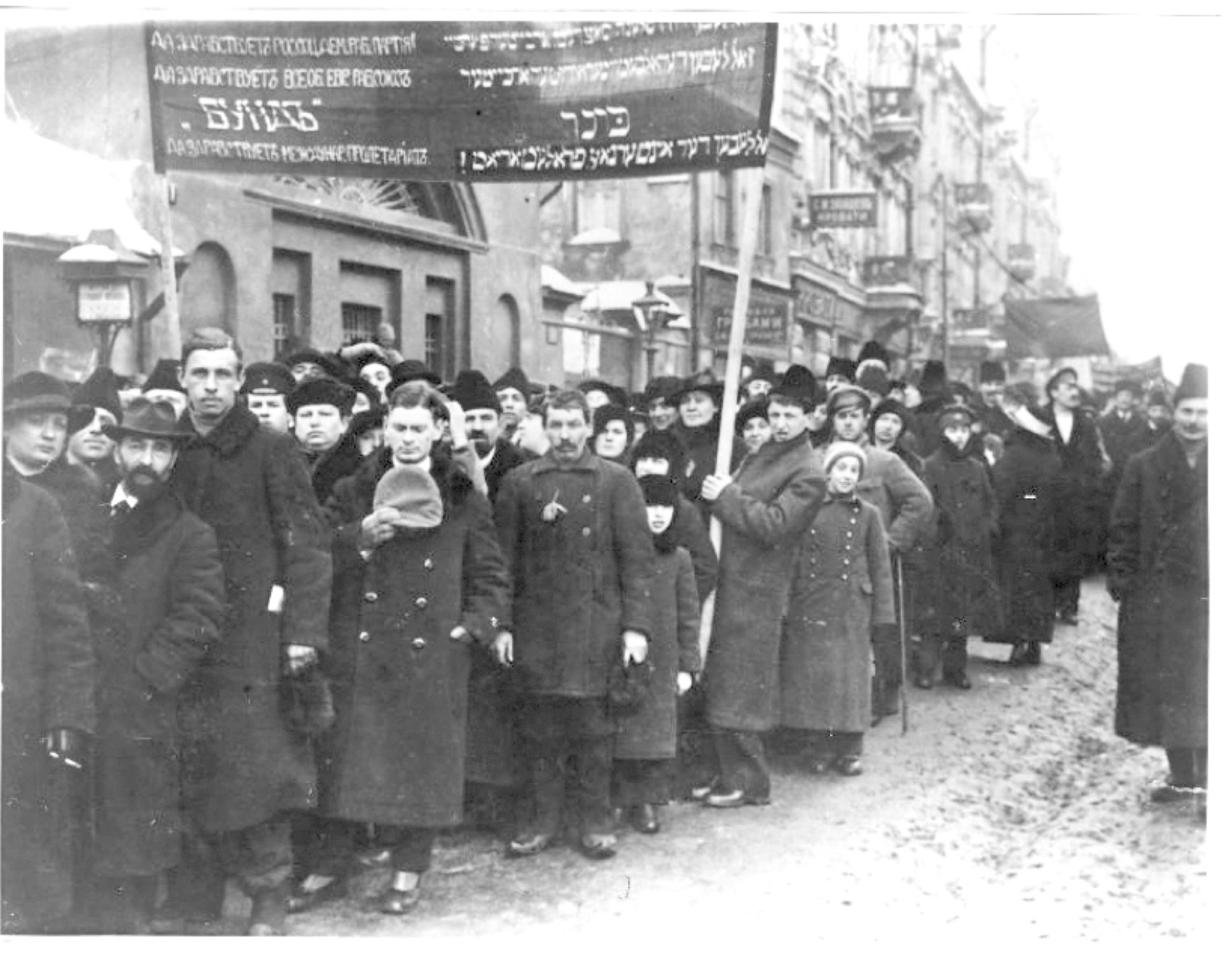
Demonstration of the Bund, 1917
The Bund and the Ukrainian Revolution
During the Revolution of 1917–1921, the Bundists worked as part of the Central Rada and Ukrainian governments. They supported the Third Universal, which proclaimed the Ukrainian People’s Republic (UPR). “When we see that the liberated Ukrainian people give freedom to our people, we take part of the responsibility for this act and wholeheartedly sign this Universal,” said a Bund representative in the Central Rada at the time.[12]
However, the party took a rather cautious view of Ukraine’s full independence and did not vote for the Fourth Universal. The Bundists feared that the proclamation of independence would inevitably lead to national conflicts, the victims of which could primarily be national minorities.[13] Some contemporary historians suggest that Jewish socialists might also have been afraid of possible Bolshevik revenge, since the Reds were at that time advancing on Kyiv (for example, Serhiy Hirik expressed this opinion on Hromadske Radio). At least as early as April 1918, Bund members voted for the constitution of the Ukrainian People’s Republic, and at the end of August 1919, a conference of Jewish parties in Ukraine with the participation of the Bund expressed support for the independent UPR.
After the October Revolution, the Bundists in the Central Rada drafted a resolution that included a “strong condemnation of the Bolshevik uprising.” And when the Reds seized Kyiv in early 1918, one of the party leaders claimed that they “destroyed all the national gains of the revolution in Ukraine.” However, the following year, pro-Bolshevik groups emerged within the Bund; for a time, there was even a separate “Communist Bund.” The vast majority of its supporters later joined the Communist Party. The “authentic” Bund in the Soviet Union suffered the same fate as the rest of the parties alternative to the Bolsheviks: it was banned. Dozens of its activists, including those who joined the Communists, were executed during Stalin’s Terror of the 1930s.
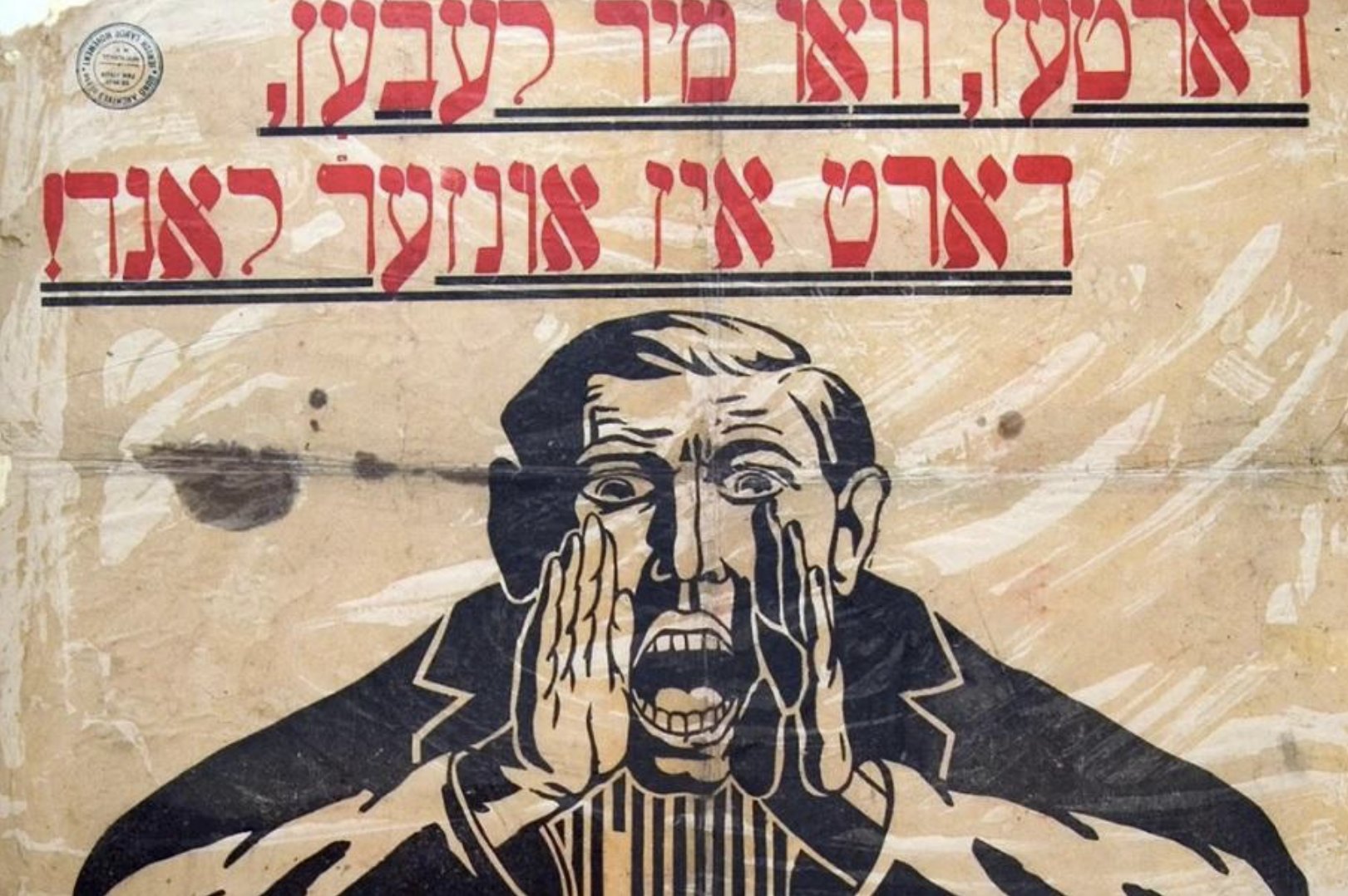
Bund Election Poster, Kyiv, 1917
Instead, the Bund continued to operate in the newly independent states of Eastern Europe, in Lithuania and Latvia, and was especially active in Poland. Polish Bund members founded youth and women’s organizations, trade unions, and participated in the establishment of a network of Yiddish-language schools. They also had centers in Galicia and Volhynia, which were under Polish rule. In Lviv, Jewish socialist rallies usually gathered on Zbozhova Square (now Zernova Street), from where columns of activists marched with an orchestra through the city.[14] And when the Nazis came to power in Germany, Lviv Bundists launched a campaign to boycott German goods. The Bund was closely allied with the Ukrainian radical socialists (“the Ivan Franko Party”), signed joint statements with them, and invited their representatives to their congresses.[15]
Catastrophe
The Second World War and the Holocaust put an end to the Bund, as well as to all Jewish life in Eastern Europe. It was not only the Nazis who contributed to its destruction, the Stalinists in the Soviet Union murdered the leaders of the Polish Bund Victor Alter and Henryk Ehrlich, as well as many of their fellow party members. Witnessing the death of his people, the Bund representative in the Polish government in exile Szmul Zygielbojm committed suicide in protest against the inaction of the anti-Hitler coalition in the face of genocide.
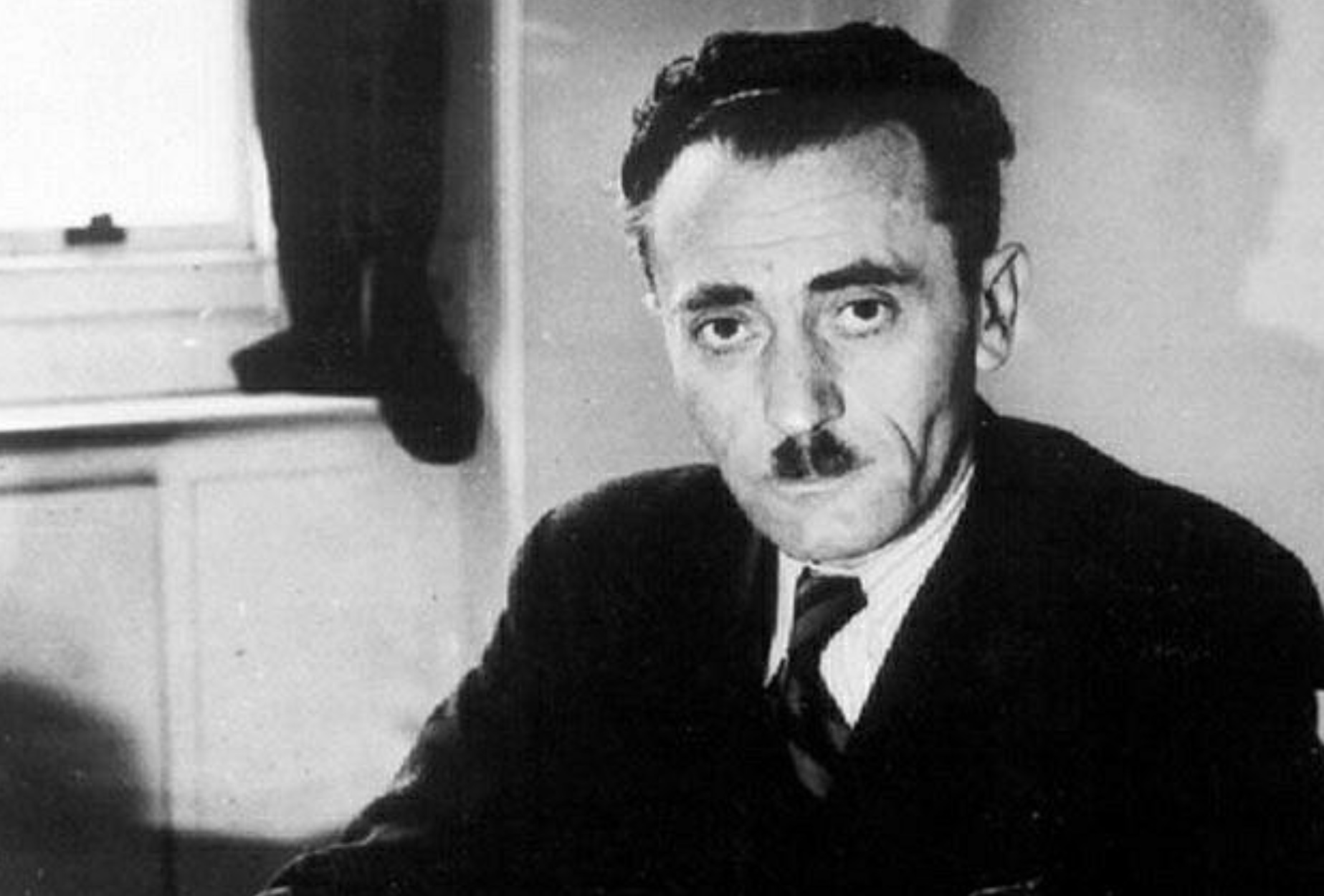
Szmul Zygielbojm
But the Bund was not going down without a fight. In 1942, the son of Bund members and a Bund youth activist himself, 23-year-old Warsaw Jew Marek Edelman became one of the leaders of the underground Jewish Combat Organization in the ghetto of the Nazi-occupied Polish capital. The following year, in 1943, he was already one of the leading participants in the doomed ghetto uprising, and after the death of the rebel commander, the socialist-Zionist Mordechai Anielewicz, Edelman took over the command. “We fought simply so that the Germans would not decide when and how we would die,” he would later recall. However, Marek Edelman survived, and a year later he was back on the barricades taking up arms, this time as a participant in the Warsaw Uprising. It was also defeated, but he survived again.

Mural in Honor of Marek Edelman, Warsaw
An underground Bund group also operated in Lviv. Its members helped ghetto fugitives and made false documents for them. There has been preserved a leaflet issued by the Lviv Bund members in March 1942, calling on ghetto inmates to build hiding places and acquire weapons.[16]
Remnants and Memory
After the Second World War, Marek Edelman, a hero of the Warsaw ghetto, was invited to move to the newly formed Israel. He refused, saying that his people were buried here in Poland, and he would stay to guard their graves. This was not an exaggeration: of the nearly 3.5 million Jews who had lived in prewar Poland, only 100,000 were still alive in 1945. This was one of the reasons why attempts to resume the activities of the Polish Bund after the war were doomed to failure. Another, no less important reason was that the new pro-Soviet government was not going to tolerate any independent political activity. In 1949, the Bund in Poland was liquidated by the authorities.
Many Bund members ended up overseas, and the organization’s World Coordinating Committee moved to New York. And on the other side of the world, in Australia, there still operates the Bund children’s organization SKIF, holding summer camps every year. A Bund delegation participated in the founding Congress of the Socialist International in Frankfurt in 1951. There were also attempts to establish a Bund organization in Israel. However, they were not very successful: in the 1959 Knesset elections, the Israeli Bund suffered a crushing defeat. In the new Jewish state, which abandoned the Yiddish language and rejected much of what was understood in Eastern Europe as yiddishkeit, the Bundists never really came into their own. Moreover, their attitude toward the Zionist utopia and its preachers remained skeptical. “The tragedy of Israel is that, on the one hand, it is surrounded by countries whose nationalist leaders want to destroy it, and, on the other, it is itself ruled by leaders who are drunk on chauvinistic and militaristic madness,” wrote the newspaper of the Israeli Bundists Unser Zeit.
Marek Edelman, perhaps the last representative of the Bund tradition in Eastern Europe, would later become a famous Polish cardiologist and save people on the operating table. In “Communist” Poland, he would oppose the pro-Soviet regime, support labour strikes and the Solidarity trade union. The new labour movement, he said, “was the same as the Bund in my youth. For me, it was a continuation, it had the same values: fraternity, social justice, hatred of dictatorship.”
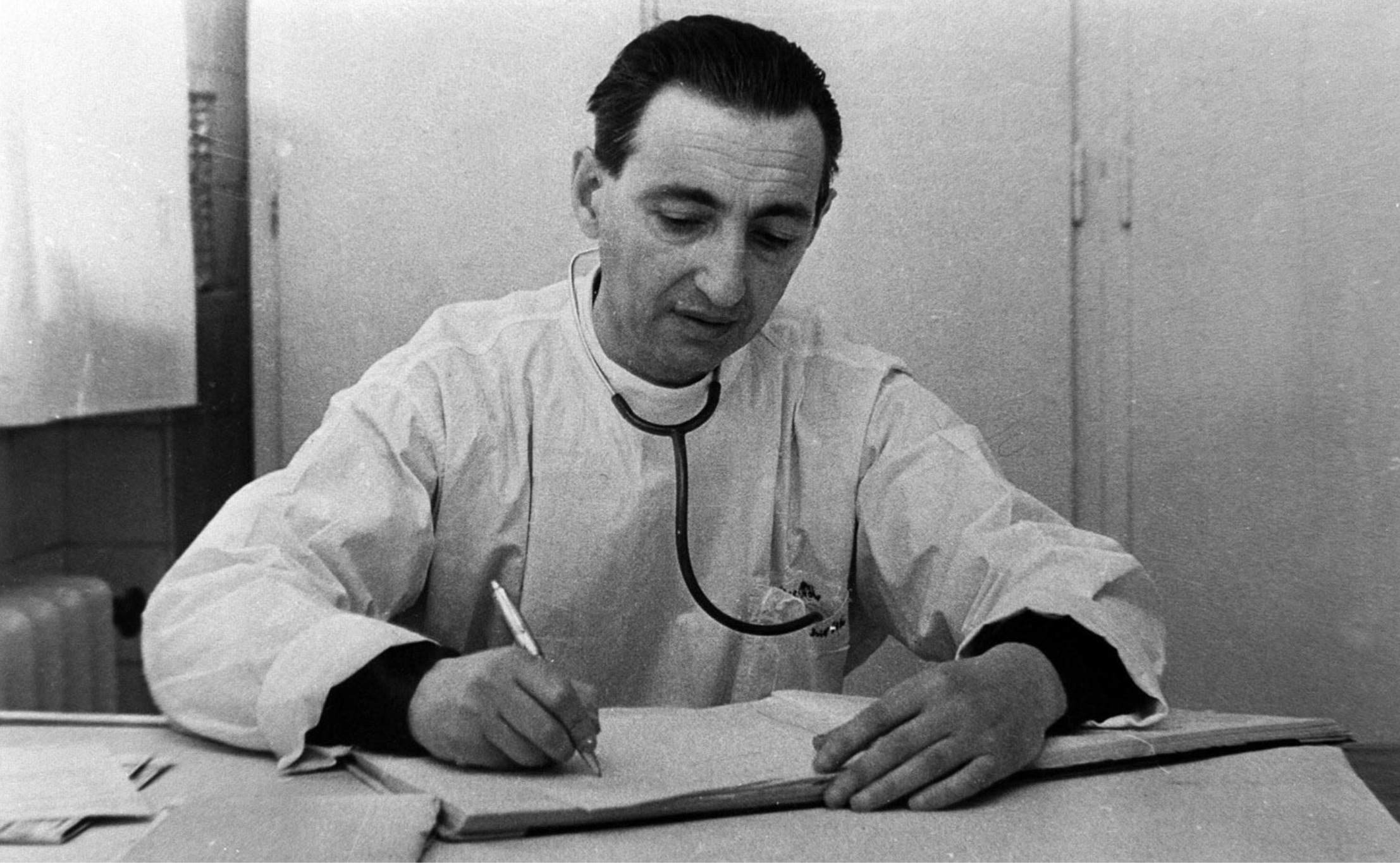
Marek Edelman
After the collapse of the Soviet camp, Edelman, who was already in his 70s, personally transported humanitarian aid and transported children out of the war-torn Bosnia; “Hitler’s victory from beyond the grave,” as the old rebel called what was happening in the Balkans at the time. He also spoke about Israel’s injustice against the Palestinians. And in 2002, he even wrote a letter to the fighters of the Palestinian movement calling for a peaceful solution — as an “old guerrilla fighter” to the “new guerrilla fighters.” For this he was boycotted by the official Tel Aviv. None of the Israeli diplomats attended the funeral of the “last European Bundist,” except for former Ambassador Shevah Weiss, who came of his own accord.
***
The history of the Bund is part of the forgotten history of Jewry and Eastern Europe on the whole, sandwiched between imperialisms and nationalisms. The Bundists tried to offer an alternative that would achieve equality while preserving diversity. They warned of the dangers of the Zionist project, the dangers, first and foremost, for the Jews themselves, and in many ways, unfortunately, they were right. They also failed in many ways. Ultimately, the Bund no longer exists, nor does the world that gave birth to it, the world of Eastern European Jewry, with its language, worldview, and traditions.
However, the memory of the Bund is still alive. Millenial Bundist is the title of the debut album, released in 2020, by a young left-wing activist and singer from Austria, Isabel Frey. Her album consists of covers of Bund songs, including Di Shvue. Raised in the spirit of Zionism, she changed her mind after living in Israel for a year and visiting the West Bank. Isabel says “The Bund allowed Jews to find a middle ground: It’s possible to be a revolutionary Jew who speaks Yiddish and thinks that we can defend ourselves from antisemitism and promote Yiddish culture, and at the same time be internationalist socialists.”
Footnotes
- ^ Бойцун М. Робітничий рух і національне питання в Україні: 1880–1918 / пер. з англ. Л. Бідочко та М. Казакова. — Київ: Rosa-Luxemburg-Stiftung в Україні; ФОП Маслаков, 2020. — с. 107.
- ^ Tobias H. J. The Jewish Bund in Russia from its Origins to 1905. — P. 105–106.
- ^ Медем Вл. Национальное движение и национальные социалистические партии в России // Формы национального движения в современных государствах: Австро-Венгрия. Россия. Германия / под ред. А. И. Кастелянского. — Спб: изд. т-ва «Общественная польща», 1910. — с. 748–798.
- ^ Бунд в Беларуси. 1897–1921: Документы и материалы // Сост. Э. М. Савицкий. — Мн.: БелНИИДАД, 1997, док. №36, 1903 г., июнь, с. 97–98.
- ^ Bernard K. Johnpoll. The politics of futility. The General Jewish Workers Bund of Poland, 1917–1943. Ithaca, New York, 1967. P. 182.
- ^ Лакер В. История сионизма. — М.: Крон-Пресс, 2000. — с. 593.
- ^ Cited from Нам И. В. Национальная программа Бунда: Коррективы 1917 года // Вестн. Том. гос. ун-та. — Томск, 2003. — № 276. — С. 83–89.
- ^ Рафес М. Г. Очерки по истории Бунда — М., 1923. — с. 277.
- ^ Мовчан О. М. Професійні спілки в Україні // Енциклопедія історії України / редкол. В. А. Смолій та ін. — Київ: Наукова думка, 2012. — Т. 9, с.45.
- ^ Бойцун, с. 105-107.
- ^ Бойцун, с. 126.
- ^ Українська Центральна Рада : Документи і матеріали : У 2-х т. / Упоряд. В. Ф. Верстюк та ін. Т. 1. Київ: Наукова думка, 1996. — с. 397–398.
- ^ Рафес М. Г. Два года революции на Украине. — М.: ГИЗ, 1920. — с. 58.
- ^ Меламед В. Між двома Світовими війнами (1919-1939 р.) // Ї, 2008, №51.
- ^ Макух І. На народній службі: Спогади. — Київ: Основні цінності, 2001. — с. 355.
- ^ Альтман И. А. Холокост и еврейское сопротивление на оккупированной территории СССР.
